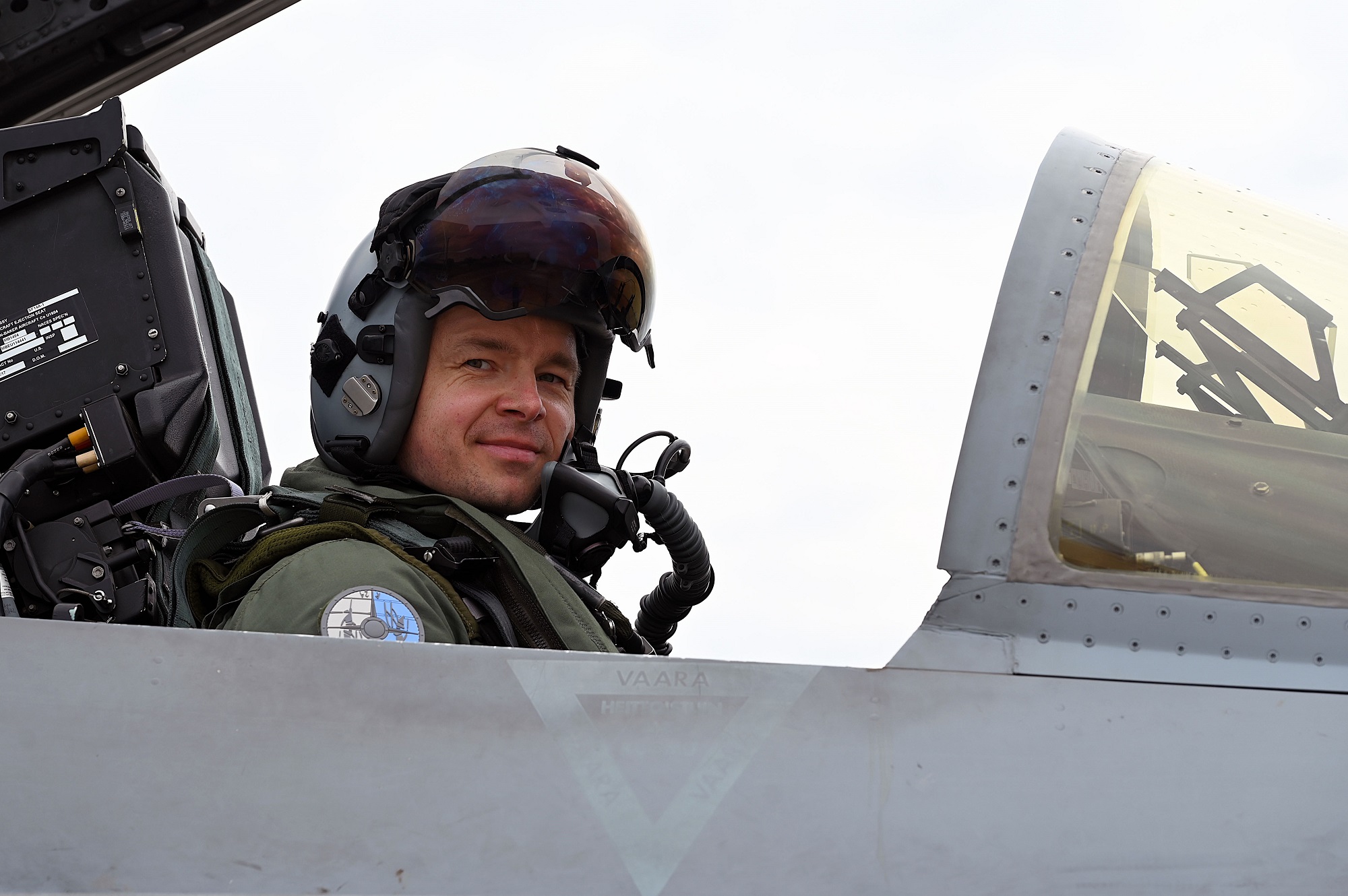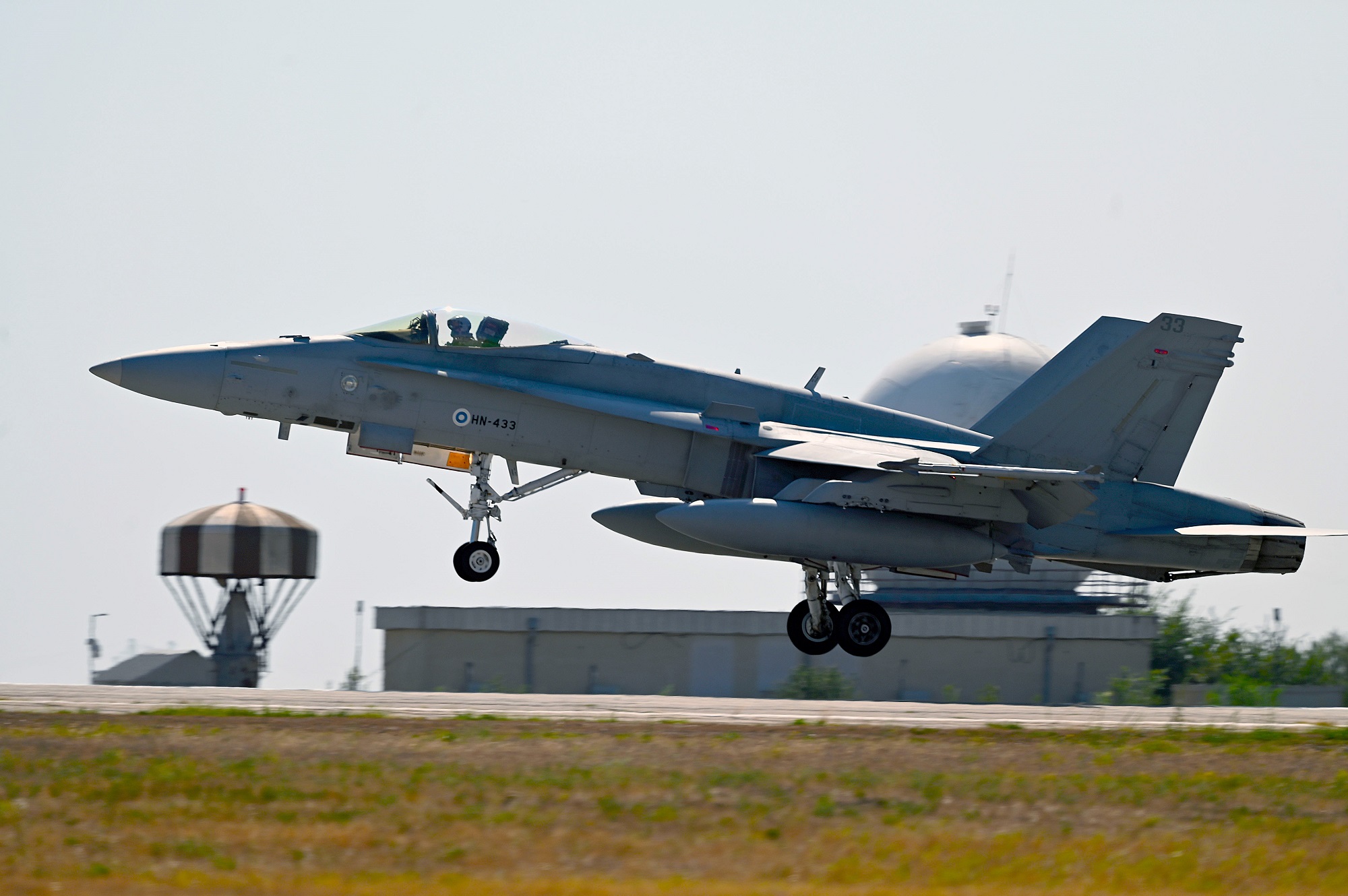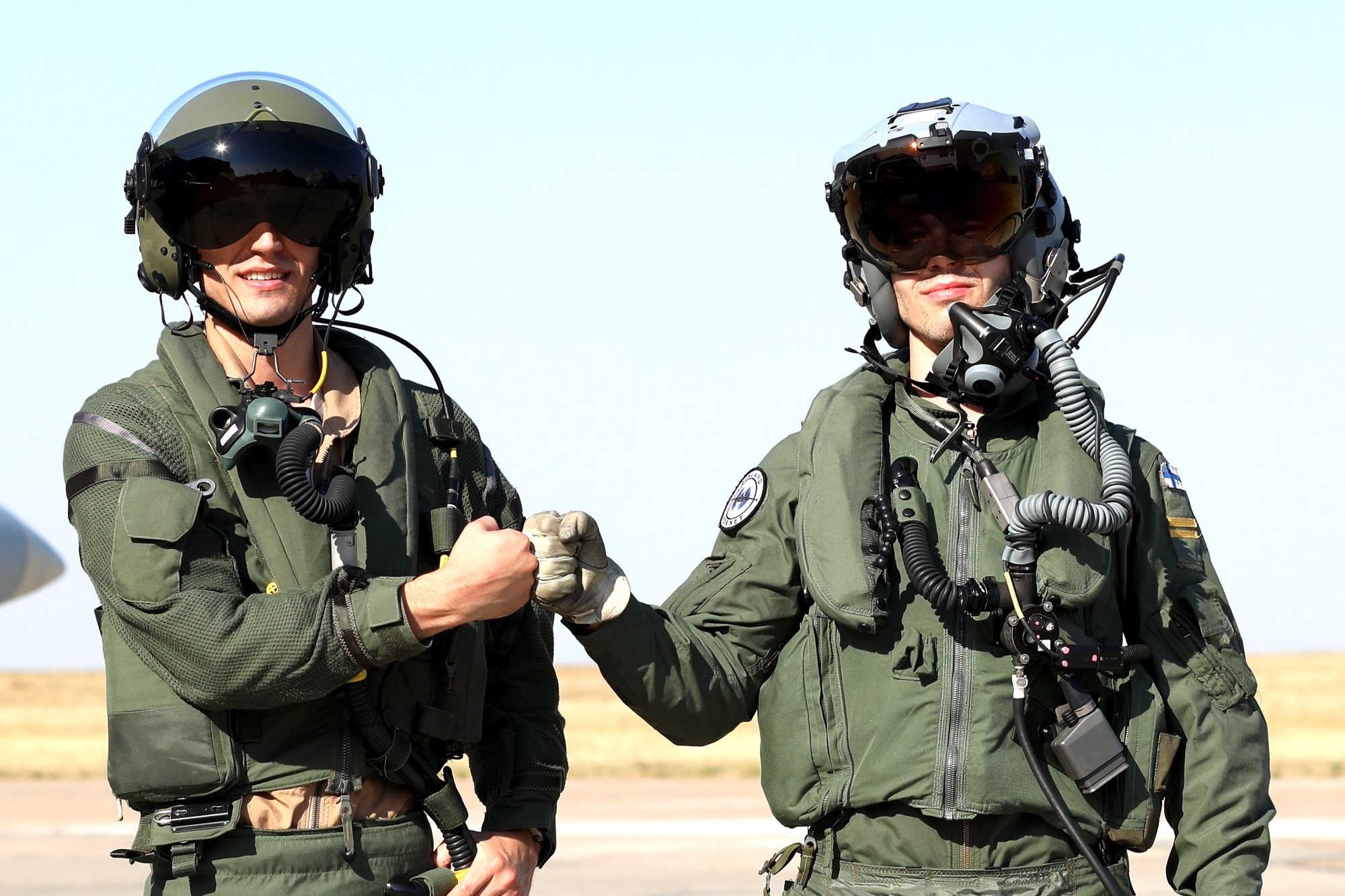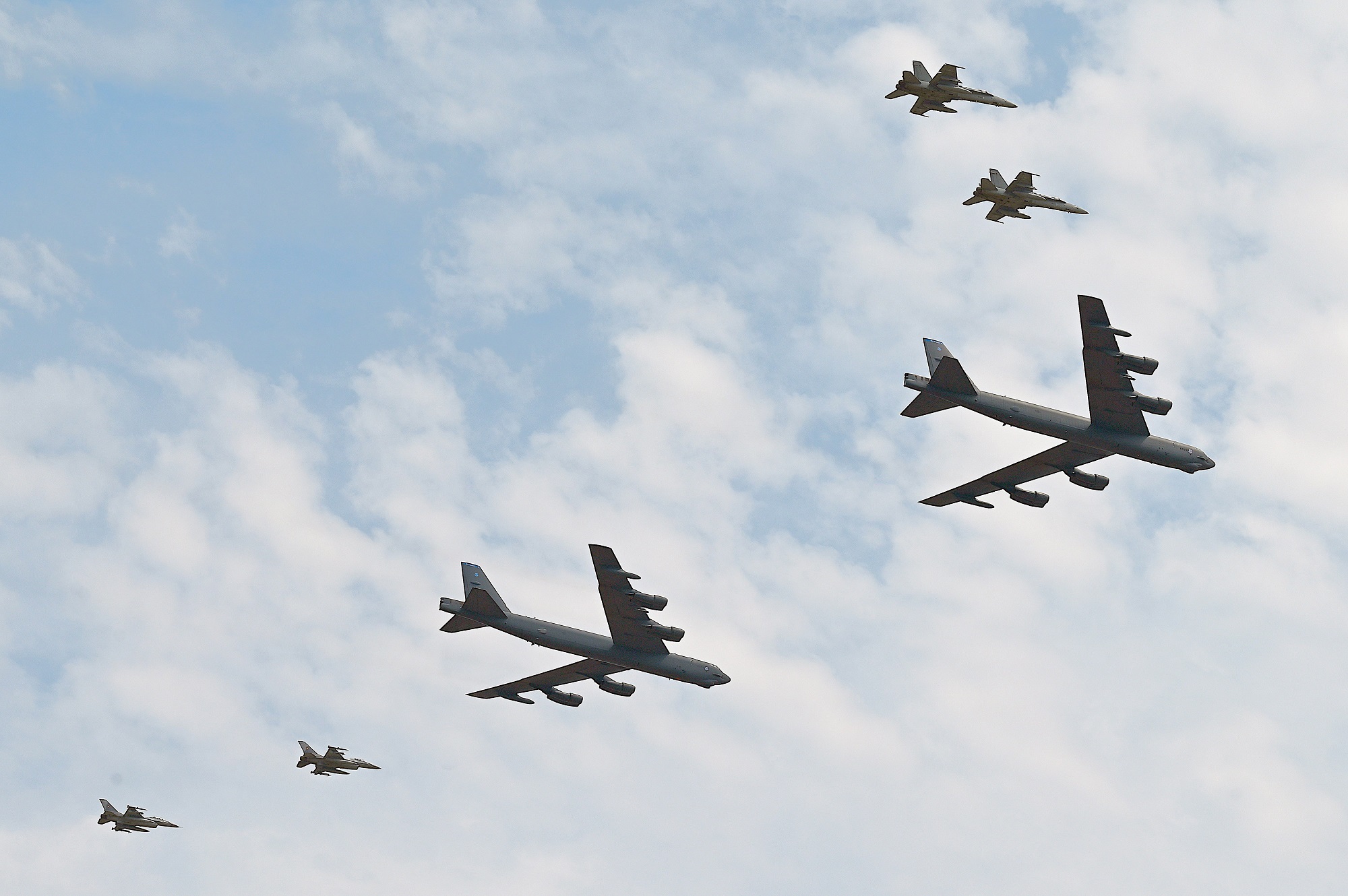Successful NATO deployment to Romania ends
The Finnish Air Force's first major NATO deployment to Romania succeeded as planned and achieved its objectives. F/A-18 Hornet fighter jets returned to Finland on 29 July 2024. Most of the personnel will return to Finland later this week, and the detachment's material will follow in August.

The deployment of the Finnish F/A-18 Hornet fighter jets to Romania was part of NATO's Air Policing and Air Shielding missions, which strengthen the collective defence and deterrence of the Alliance through an enhanced presence and exercise activity of fighter jets and ground-based air defence units in NATO's eastern member states. The Finnish Air Force detachment consisted of seven Hornets and about 90 personnel at a time. The operation was carried out in three rotations and involved a total of about 250 personnel from all Air Force units during the summer. The aim of rotating the personnel was to gather as much experience as possible of operating under the direction of NATO's military command structure.
‒ The operation was interesting and rewarding. We will take home a lot of lessons learned about participating in a NATO mission and operating in a new environment. Being under the direction of NATO's command structure required some minor changes in the planning of flight operations, but we adapted well, and also gained some lessons for developing our operations at home. Cooperation with Allies was smooth and continuous training activity improved our capabilities. What was exceptional for us in Romania was the heat. On several days, the temperature exceeded 40°C, which required our personnel to adapt and develop new ways of working, for example in terms of taking breaks more often, says Major Toni Vanhatalo, commander of the third and final rotation of the Finnish Air Force detachment.

During June and July, the Finnish F/A-18 Hornet fighter jets were on quick-reaction alert (QRA) duty at Mihail Kogălniceanu Air Base on alternate weeks with the Royal Air Force's (RAF) Typhoon jets. Romania is primarily responsible for surveilling and protecting its own airspace, but the presence of F/A-18s and Typhoons supported the readiness of NATO's collective defence in the Black Sea region. The Finns and the British will hand over the NATO missions in Romania to the Spanish Air Force.
‒ We had access to NATO's high-quality and comprehensive intelligence on current events in the region, so we were able to prepare for different scenarios and act as the situation required. We carried out the operation as planned without constraints. Operating in Romania did not differ significantly from what we do in Finland, but the proximity of the war also brought different types of flights. Our mission was clear: to protect NATO airspace, Major Vanhatalo says.

Lessons identified and learned for the future
For the Finnish Air Force, the objectives of the deployment were to enhance NATO integration, to deepen bilateral cooperation with the Royal Air Force, and to develop the capability to operate from an Allied air base. The objectives were achieved and lessons identified were written down to learn and improve own operations in the future.
With regard to the first objective, NATO integration, an important milestone was reached in early June when the Finnish fighter detachment passed a NATO evaluation. The evaluation, conducted by the NATO Allied Air Command (AIRCOM), verified the Finnish Air Force's capability to start doing QRA duty of NATO's Air Policing mission. Passing the evaluation demonstrated that the detachment is capable of operating in accordance with NATO tactics, techniques and procedures.
In order to achieve the second objective, a very close and structured cooperation with the RAF was established during the deployment. Finnish and British fighter jets trained together in the air almost every day, and there was also cooperation off-duty, such as sports and sauna. The RAF's 140 Expeditionary Air Wing, consisting of six Typhoon jets and about 250 personnel, had arrived in Romania already at the beginning of April. Thus, the British were able to provide was very valuable support to the Finnish detachment, especially in the early stages of the deployment.

As for the third objective, the operation provided valuable experience in deploying a fighter detachment to an Allied air base. The Finnish Air Force has been participating in international exercises for years, but the NATO deployment to Romania was both larger and longer in duration than a typical exercise abroad. In addition to the seven fighter jets, the detachment had approximately twenty vehicles and about a hundred containers. The logistics were planned and carried out in close cooperation with the NATO Support and Procurement Agency (NSPA).
‒ NATO integration consists of many different elements. The Alliance's ability to provide logistical support and intelligence, for example, will significantly enhance our capabilities. The lessons identified and learned from Romania are valuable for Finland, because the ability of all NATO members to work together is a huge asset for us. For me, the main takeaway from the operation is the confidence in NATO forces and our collective strength, says Major Vanhatalo.

Diverse exercise activity with Allies
In early June, immediately after the NATO evaluation was completed, the Finnish Air Force detachment participated in the Ramstein Legacy 24 exercise led by AIRCOM in Romania and Bulgaria. The exercise involved fighter jets and ground-based air defence units from several NATO member states. The main objective for flying units was to develop interoperability with ground-based air defence. At the Capu Midia firing range, for example, a Romanian Patriot air defence unit took part in the exercise.
During the deployment, the Finnish fighter detachment flew almost every day together with Allies as part of NATO's Air Shielding mission in Romania. In addition to dissimilar air combat training between different types of fighters, the Finnish fighter pilots also trained together with U.S. joint terminal attack controllers. The aim of the continuous exercise activity was to maintain the collective defence and deterrence of the Alliance and to develop the interoperability of the fighter jets and ground-based air defence units from various NATO members.
For example, an air combat scenario flown in mid-July involved Finnish and Spanish F/A-18 Hornet fighter jets, Greek and Turkish F-16s and British Typhoon jets. Two tankers, a Spanish A400M and a Turkish KC-135, provided air-to-air refuelling support to the fighter jets. In addition, a French MAMBA air defence unit participated in the exercise on the ground.

At the end of July, the Finnish fighter detachment had the opportunity to train escorting United States Air Force B-52 Stratofortress bombers together with Romanian F-16s. The two bombers arrived at Mihail Kogălniceanu Air Base from Barksdale Air Force Base in Louisiana, training en route with several Allies. The Finnish Air Force's F/A-18 Hornet fighter jets escorted the B-52s, which flew non-stop via the Barents Sea, both in Finnish and Romanian airspace.
‒ We also flew F/A-18 pilots' national flight training while in Romania. Compared to the Finnish airspace, the training areas in Romania were somewhat smaller, but they were nevertheless adequate and functional for us. All three rotations included young F/A-18 pilots, and we were able to carry out training missions for them as planned and according to our flight training programme. The Finnish Air Force's flight training provides already the young fighter pilots with good skills to operate together with Allies in an international environment, says Major Vanhatalo.

Finnish fighter jets arrive in Romania to take part in NATO missions
Finnish Air Force ready to start NATO Air Policing in Romania



